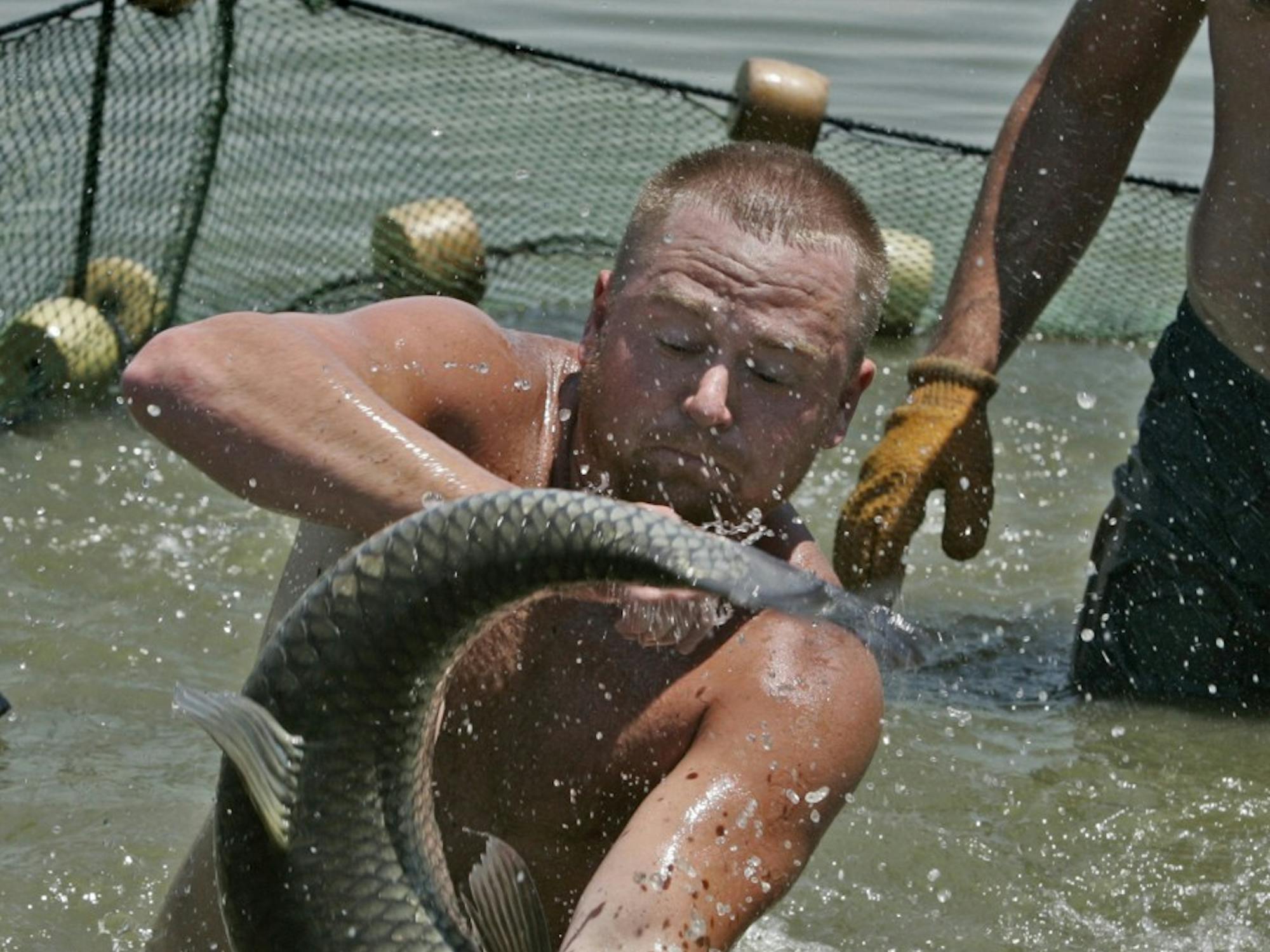MILWAUKEE— Mop-up from the massive fish kill continued on the Chicago Sanitary and Ship Canal Friday, and while officials said they’ve killed thousands of fish, as of Friday afternoon only one of them was confirmed to be an Asian carp. Those are the fish actually targeted in the $3 million operation to protect Lake Michigan.
That doesn’t necessarily mean there aren’t loads of dead Asian carp lying on the bottom of the 25-foot-deep canal built more than 100 years ago to send Chicago’s treated sewage into the Mississippi River basin.
The poisoning of a six-mile stretch of canal was ordered to clear the canal of all Asian carp so an electric fish barrier built to keep the super-sized, jumping fish from invading Lake Michigan can be briefly shut down for maintenance.
No actual Asian carp had been found in the waters immediately below the barrier before this week’s poisoning, but last summer a new type of “environmental” DNA testing revealed the presence two species of Asian carp, silver and bighead.
Federal biologist Duane Chapman has done research on the effect the fish poison has on silver and bighead carp, and he says the poison does not cause those fish to immediately float.
Chapman predicted before the lone carp was found late Thursday that biologists might find a specimen or two in the wake of the poisoning, but he said nobody should be expecting a flotsam of Asian carp carcasses.
He said some of the dead fish likely will reach the surface when their stomachs fill with gas, but that might not happen in cold water, and it might not happen for a long time.
“There will be dead fish floating up for a long time in this stretch of river,” he said.
Even as clusters of journalists scanned the canal surface Thursday looking for a big kill, David Lodge, the University of Notre Dame biologist who conducted the DNA tests, agreed that there likely wouldn’t be much to see in terms of silver and bighead carp.
“If there aren’t very many Asian carp out there, I would not be surprised if we didn’t see them,” he said.
Lodge’s DNA work this summer revealed at least some Asian carp had advanced to the waters just below the barrier, despite the fact that traditional fish survey techniques like electro-shocking and netting found no trace of the fish in the area.
Lodge’s method involves taking water samples and then analyzing them for traces of silver and bighead DNA, and he said it can find even the tiniest of populations.
The problem is that while his tests are highly sensitive in terms of detecting the presence of carp, they don’t reveal a thing about how many fish are actually in an area; like a pregnancy test, it gives simply a positive or negative result.
“The information that is gained (by DNA sampling) is really very crude,” he said. “It’s a sensitive tool, but a positive result tells us nothing about the abundance of the fish out there.”
He said he was inspired to turn to DNA in the hunt for Asian carp after reading about a recent research project that found traces of bullfrog DNA in a French pond.
His sampling started on the canal below the barrier last summer and his crew has been moving north toward Lake Michigan since. Bad news has come almost every step of the way.
The latest DNA samples show evidence of the fish in the Calumet River within about six miles of Lake Michigan, just below a navigation lock that would be the last physical structure between the fish and the lake.
Lodge said more DNA sampling is under way for the waters closer to the lake.
“We’re still trying to define the invasion front,” he said.
Still the closest to Lake Michigan an actual fish has been found is the one that turned up Thursday about six miles below the electric barrier, which itself is about 20 miles downstream from Lake Michigan.
Lodge’s evidence that at least a handful of fish have made it past the barrier doesn’t mean Lake Michigan is doomed to be ravaged by the filter-feeding beasts that can grow to more than 50 pounds and consume up to 20 percent of their weight in plankton per day.
Biologists say a small number of carp making their way into Lake Michigan doesn’t mean the fish will establish a breeding population.
Michigan Gov. Jennifer Granholm asked the Michigan attorney general this week to explore going to court to force the U.S. Army Corps of Engineers to at least temporarily close the navigation locks that, when open, would allow the fish an unobstructed swim into the lake.
Barge operators say such a closure could deal a brutal blow to their industry and the industries that rely on the products they move.
Wisconsin state Rep. Jon Richards on Thursday asked Wisconsin Attorney General J.B. Van Hollen to follow Granholm’s lead.
“Right now we do not have an opinion or a position on it,” Van Hollen’s spokesman Bill Cosh said Thursday.
Governor Doyle, meanwhile, “is reviewing what steps Michigan is considering,” said press secretary Lee Sensenbrenner.
“Obviously, the governor is interested in pursuing steps that will protect the Great Lakes from invasive species,” he said.
Army Corps officials, meanwhile, said late Friday they are still considering whether to shut down the lock temporarily.







